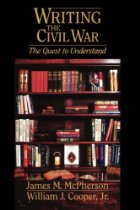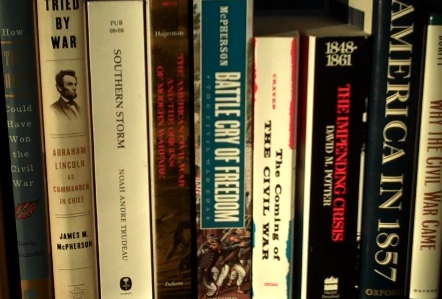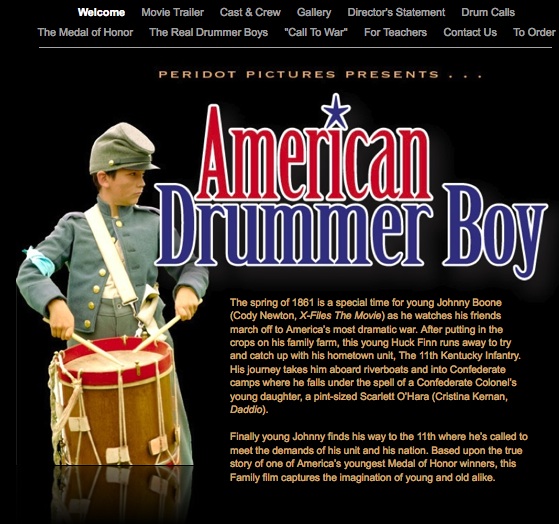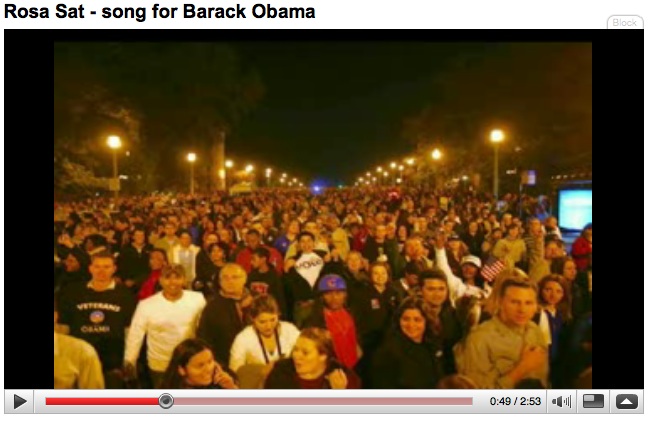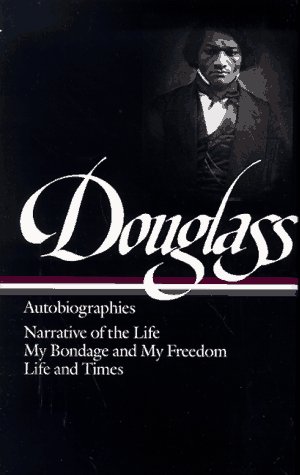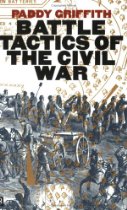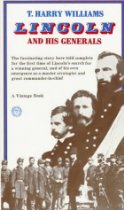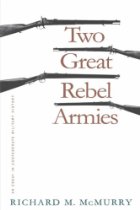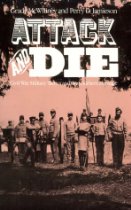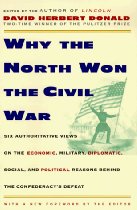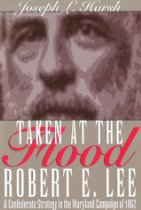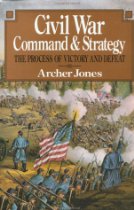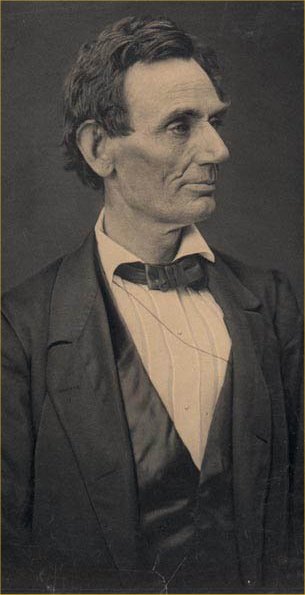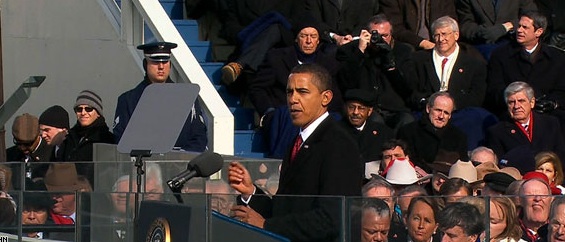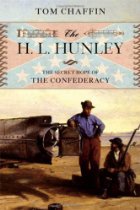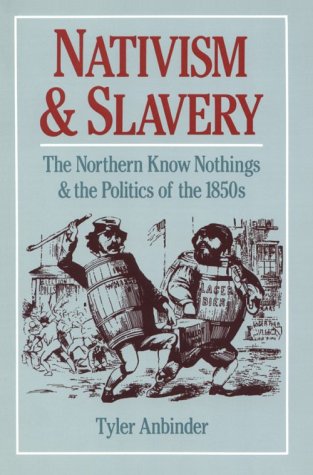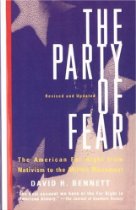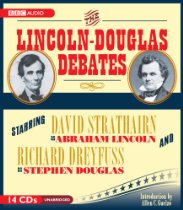Archive for January 2009
New Additions: Writing the Civil War and New Shelves at WigWags Books
My copy of Writing the Civil War: The Quest to Understand arrived this week. Thanks to Daniel Sauerwein, a fellow WordPress blogger over at Civil War History for the recommendation. Published by the good folks at University of South Carolina Press, it is edited by James M. McPherson and William J. Cooper, Jr. Contributors include:
- Michael Les Benedict
- Drew Gilpin Faust
- Gary W. Gallagher
- Joseph Thomas Glatthaar
- Michael F. Holt
- Peter Kolchin
- Reid Mitchell
- Mark E. Neely, Jr.
- Philip Shaw Paludan
- George C. Rable
- James L. Roark
- Emory M. Thomas
Note: I’ve put up new bookshelves over at WigWags Books and have begun adding links to my – no kidding – MANY books on writing. It will take me some time to get them all added. That said, there is a new shelf titled specifically, “Writing – Civil War” on which I’ve placed the book above. Please let me know if you’re aware of others in this category.
Finally, I’ve added a new icon/picture to the write navbar of WigWags on which you can click to be directed to books on my bookshelves. This is an actual image of just a few of the books on my home bookshelves. You’ll find the new icon right under the title,
Find books on my bookshelves at WigWags Books
Civil War Movie – American Drummer Boy
This week, I had the opportunity to view the independent film American Drummer Boy by Writer/Director C. Dorian Walker and producer, Elain Nogay Walker. The story takes place in the Western Theater of the American Civil War and chronicles the coming-of-age of young Johnny Boone (Cody Newton) who runs away from his Kentucky farm in hopes of joining his hometown unit, Company A of the 11th Kentucky Infantry, U.S. His adventures take him behind Confederate lines where he is captured and accused of being a spy. With the help of a shady English minstrel, Reginald T. Deets (Clay Watkins), he escapes but is forced to mascaraed as a Rebel drummer with the 24th Mississippi Regiment. He experiences battle on the other side before eventually escaping to the North and finding his unit. There, while serving as drummer boy, he demonstrates valor under fire and is awarded the Medal of Honor (this a true occurrence).
Walker bases the storyline on a compilation of true events. Those events are described in some detail in a companion documentary, Call to War, also on the DVD, which is quite good and includes interviews with historians such as Bill Bright, Curator of the Kentucky Historical Society. It tells the true stories of William Horsfall, 14, who became one of the youngest recipients of the Medal of Honor and Asa Lewis who, although serving with distinction, was sentenced to death before a firing squad of his own unit because he went home to help his recently widowed mother put a crop in.
Two performances stand out in the film. Cody Newton (X Files, The Movie) is quite good in his lead role of young Johnny Boone (pictured above). Clay Watkins also does an admirable job as Reginald T. Deets, Johnny’s sometimes mentor. The music score by Eric Colvin is outstanding.
The film will be of interest to Civil War re-enactors because of its attention to historical details and would be perfect for young audiences as a teaching tool for the American Civil War. The team has put together a nice website which includes teacher resources available here. Recommend.
Beginning a search for a thesis topic…The American Civil War
I am going to begin in earnest to find a suitable topic for my thesis. I don’t expect to have one locked in until I get another course or two under my belt but I am interested in the opinions of many of you who I would consider expert on topics of Civil War military history. Where are there gaps in scholarship that need filling from your perspective?
Let me hear from you!
New Acquisition – Fredrerick Douglass Autobiographies
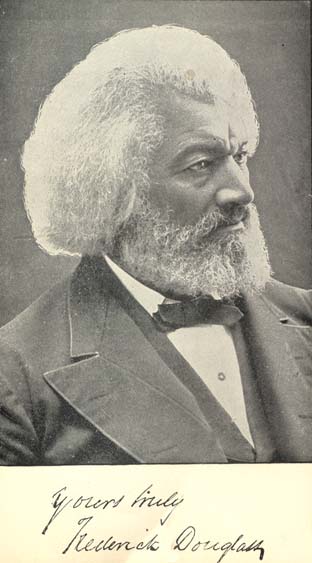
My study of Antebellum America this term has revealed a significant gap in my library. That has been filled with the arrival this week of Frederick Douglass: Autobiographies. I purchased The Library of America edition. I like the look and feel.
It includes three works:
- Narrative of the Life of Frederick Douglass, an American Slave
- My Bondage and My Freedom
- Life and Times of Frederick Douglass
From historian Bruce Levine,
“Frederick Douglass’s magnificent autobiography, The Life and Time of Frederick Douglass is indispensable.”
I look forward to getting to know this important American.
Bruce Levine, Half Slave and Half Free: The Roots of Civil War, Revised (Hill and Wang: New York, 2005), 264.
Next Course – Civil War Strategy and Tactics
I just registered for my next course, Civil War Strategy and Tactics, which will start March 2nd. Book list looks terrific and is on order. It’s also loaded on my virtual bookshelves which you can access by clicking on any of the books. I’ve updated “the courses” page here.
Course Description: This course is a study of the American Civil War with emphasis on operational contributions of Union and Confederate military leadership. Students examine Civil War battles on two levels: the strategic doctrine as formed by the major commanders and tactical developments that affected the conduct of battle at a lower echelon of command. Special emphasis is on the interplay between these levels in order to gain a comprehensive view of strategy and tactics in both armies from 1861-1865.
On Racism in the Antebellum North – 2 – Douglas
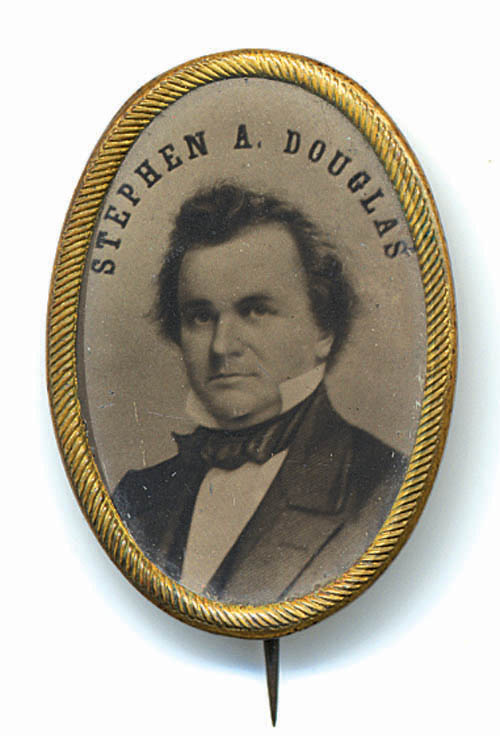 I recently had the opportunity to listen to a performance of the first four debates between Abraham Lincoln and Stephen A. Douglas. There is no better example of the Northern Antebellum perception of the black man than in the words of Douglas during the first of those debates held on August 21, 1858 in Ottawa, Illinois. He used the opportunity to mock Lincoln and abolitionists. More importantly, he showed his colors to be that of a true white supremacist. The comments from the crowd are noted in parentheses.
I recently had the opportunity to listen to a performance of the first four debates between Abraham Lincoln and Stephen A. Douglas. There is no better example of the Northern Antebellum perception of the black man than in the words of Douglas during the first of those debates held on August 21, 1858 in Ottawa, Illinois. He used the opportunity to mock Lincoln and abolitionists. More importantly, he showed his colors to be that of a true white supremacist. The comments from the crowd are noted in parentheses.
“I do not question Mr. Lincoln’s conscientious belief that the negro was made his equal, and hence is his brother, (laughter,) but for my own part, I do not regard the negro as my equal, and positively deny that he is my brother or any kin to me whatever. (“Never.” “Hit him again,” and cheers.) Lincoln has evidently learned by heart Parson Lovejoy’s catechism. (Laughter and applause.) He can repeat it as well as Farnsworth, and he is worthy of a medal from Father Giddings and Fred Douglass for his Abolitionism. (Laughter.) He holds that the negro was born his equal and yours, and that he was endowed with equality by the Almighty, and that no human law can deprive him of these rights which were guarantied to him by the Supreme ruler of the Universe. Now, I do not believe that the Almighty ever intended the negro to be the equal of the white man. (“Never, never.”) If he did, he has been a long time demonstrating the fact. (Cheers.) For thousands of years the negro has been a race upon the earth, and during all that time, in all latitudes and climates, wherever he has wandered or been taken, he has been inferior to the race which he has there met. He belongs to an inferior race, and must always occupy an inferior position. (“Good,” “that’s so.”)” (1)
Douglas also made a point of repeating in several of his debates with Lincoln the improprieties of an abolitionist who he observed driving a carriage while Fred Douglass lounged in the cab with the driver’s wife. This inflamed sense of impropriety regarding black men and white women was consistent with fear mongering in the South that led to greater controls on slave populations.
Read the first post in this series here.
(1) Abraham Lincoln, Stephen A. Douglas, “First Debate: Ottawa, Illinois August 21, 1858,” (<http://www.nps.gov/liho/historyculture/debate1.htm> Accessed on 18 Jan. 2009).
On Racism in the Antebellum North
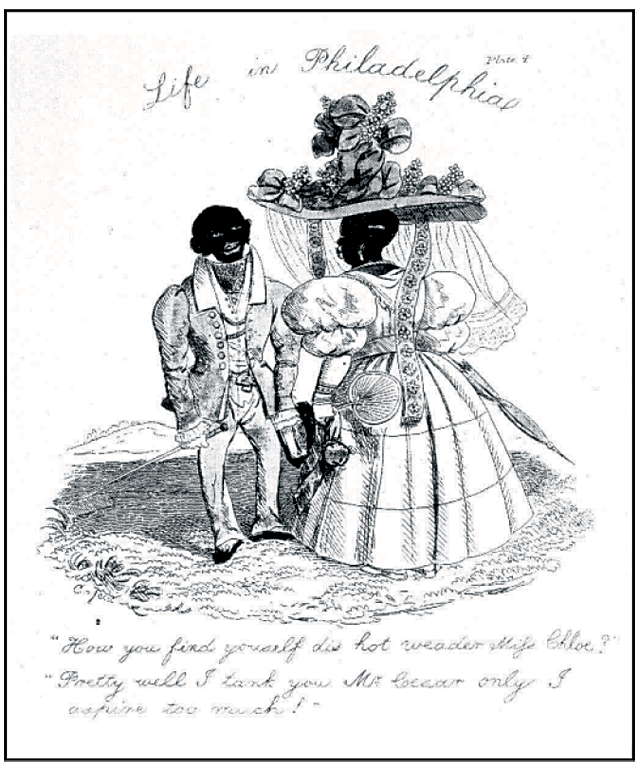
"How you find yourself?" Source: Lithograph by Edward Clay, Life in Philadelphia, plate 4 (Philadelphia: S. Hart, 1829); courtesy of The Library Company of Philadelphia.
There is much in Bruce Levine’s Half Slave and Half Free: The Roots of Civil War that informed my study of Antebellum America. Most of it fit with my understanding of the era and the issues with which Americans grappled. I gained much, however, from adding Levine’s insights to my own.
Several things stood out as surprising to me in my reading of Levine’s work. One epiphany came from Levine’s treatment of racism that existed in the North prior to the Civil War. It is easy for today’s generations to naively assume that since the North fought, in part, to end slavery, the peoples engaged in that effort felt some affinity for the black man. But Levine points out that “while deploring slavery as an institution,” many northerners “despised African Americans as much as southern whites did.” (1) But, Levine posits,
“Racism had a different significance in the free and slave states. Whereas in the South racism enlisted in the cause of keeping African Americans enslaved, in the North it aimed chiefly to force blacks out of the white population’s vicinity and path. Precisely because it served such very different practical ends, in different locales, antebellum America’s ubiquitous anti-black racism could not indefinitely reconcile northerners to southern demands and could not permanently calm slaveholders’ anxieties about northern intentions.” (2)
So while Northern religious and social values of the era were increasingly “antithetical to bondage,” they should not be interpreted as an invitation to the black man to fully join in Northern Antebellum white society.
About the image: The History Teacher provides an excellent description about this image in a larger lesson titled Free Black Activism in the Antebellum North and penned by Patrick Rael of Bowdoin College. He provides a description about the image that I believe will be helpful and which I quote here. I recommend a full reading of his essay which is available here.
“How you find yourself?”
Etchings such as this mocked the social pretensions of free black urbanites who, through their habits of consumption and display, were thought to desire social status above their stations. This image was one of a series, entitled “Life in Philadelphia” by political cartoonist Edward Clay, which lampooned the behavior of a range of city dwellers, white and black. The text on this image reads:Mr. Ceasar: “How you find yourself did hot weader Miss Chloe?”
Miss Chloe: “Pretty well I tank you Mr. Cesar[,] only I aspire too much!”The humor here, such as it is, depends on a malapropism, or a ludicrous misuse of words that signals their speaker’s inability to master proper English. This form of parody helped to define stereotypes of free blacks in nineteenth-century America, and continued well into the twentieth century.”
Image Source: Lithograph by Edward Clay, Life in Philadelphia, plate 4 (Philadelphia: S. Hart, 1829); courtesy of The Library Company of Philadelphia.
(1) Bruce Levine, Half Slave and Half Free: The Roots of Civil War, Revised (Hill and Wang: New York, 2005), 251.
(2) Patrick Rael, “Free Black Activism in the Antebellum North,” The History Teacher February 2006 <http://www.historycooperative.org/journals/ht/39.2/rael.html> (18 Jan. 2009).
Nightly News video : Railroads woven into presidential history
NBC Nightly News ran this piece tonight. My buddy Peter Hansen (above) is interviewed toward the end. His clip was filmed here in Kansas City behind the headquarters of Kansas City Southern Railway next to what is known as the Harry Truman Car. That would make his second national news program in a week or so. Not bad! See his contributions in my popular series titled Civil War Railroads here.
If the video below doesn’t play, click here or on Pete’s image above.
Vodpod videos no longer available.
Technology in U.S Military History Series Posts
I was quite flattered to discover that my series on Technology in U.S. Military History was listed as “Recommended Reading” on a graduate course in Military Leadership at the University of Oklahoma. To make it easier for those posts to be accessed, I’ve moved them to the “Popular Series” section pages. That can be accessed here or on the right Nav Bar under Popular Series Posts.
Or, you can access below which replicates the series post page.
—-
This four part series can be accessed via the following links.
Technology in U.S. Military History – 1
Technology in U.S. Military History – 2
Technology in U.S. Military History – 3
Technology in U.S. Military History – 4
The H.L. Hunley: The Secret Hope of The Confederacy
The good folks at Hill and Wang sent me a review copy of Tom Chaffin’s book, The H.L. Hunley: The Secret Hope of the Confederacy which arrived today. I’m really jazzed about this since I wrote a post on the Hunley a while back (see On Dog Tags, Sunken Confederate Subs, and Graves Registration). Fascinating stuff.
The book’s official webpage is here and includes some interesting features including interactive blueprints of the sub.
Hill and Wang
Published: September 2008
ISBN: 978-0-8090-9512-4
ISBN-10: 0-8090-9512-2
Trim: 5 1/2 X x 8 1/4 inches
352 pages, 16 Pages of Black-and-White Illustrations/2 Maps/Appendix/Notes/Bibliography/Index
I found Professor Chaffin’s credentials (see his page at the University of Tennessee here) impressive and will enjoy reading the text version of his dissertation as well.
Ph.D., U.S. History, May 1995; Emory University. Dissertation: “‘Buffalo Hunt’: Narciso López and the Clandestine U.S. War against Cuba, 1848-1851.”
M.A., American Civilization, 1982, New York University. Thesis: “Toward a Poetics of Technology: Hart Crane and the American Sublime.” B.A., English, “with honors,” and philosophy minor, 1977, Georgia State University.
New Acquisition: Nativism and Slavery: The Northern Know Nothings & the Politics of the 1850’s
My copy of Tyler Anbinder’s Nativism and Slavery: The Northern Know Nothings & the Politics of the 1850’s finally arrived yesterday. One of my readers recommended it as one of the best resources on the Know Nothings Party which I’ve just finished a series of posts on. Can’t wait to dig in.
ISBN13: 9780195089226
ISBN10: 0195089227
Paper, 352 pages
Oxford University Press
Published: May, 1994
Winner of the Avery O. Craven Award of the Organization of American Historians
New York Times 1992 Notable Book of the Year
Chosen by The Gustavus Myers Center as a 1992 Outstanding Book on Human Rights in the United States Outstanding Book on Human Rights
 Dr. Anbinder is chair of the Department of History at The George Washington University. You can view his complete C.V. here.
Dr. Anbinder is chair of the Department of History at The George Washington University. You can view his complete C.V. here.
Fugitive Slave Law Backfires
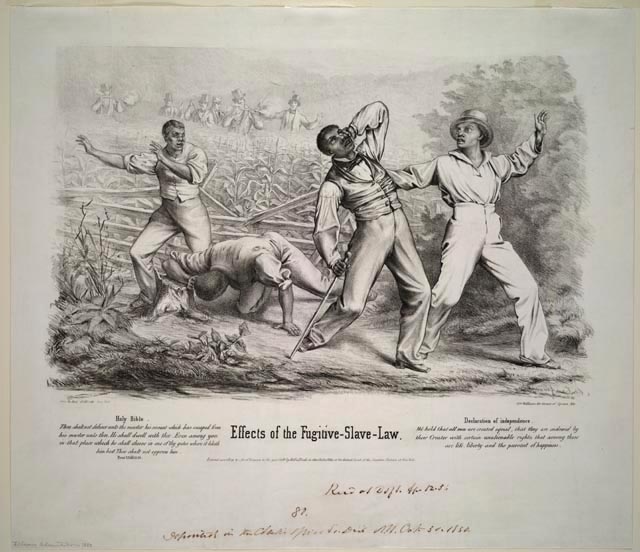
Source: American Treasurers of the Library of Congress
Interesting reading from Bruce Levine’s text, Half Slave and Half Free : The Roots of Civil War, this evening. He contends that the fugitive slave law that was a part of the Compromise of 1850 actually did more damage to slavery’s cause than good.
So long as slavery seemed geographically contained and remote, free-state residents could despise it without feeling much direct personal involvement in its workings; slavery could thus remain the peculiar institution of the South, not a problem or responsibility of the North. By sending slave hunters into the free states and requiring even antislavery citizens to aid them, however, the new law made such rationalizations impossible.
Net-net: pushing compliance to slavery controls “compelled Northerners to confront slavery as a national, not just a sectional, issue.” (Levine, 189-190)
About the image:
S. M Africanus
The Fugitive Slave Law
Hartford, Connecticut: 1850
Printed broadside
Rare Book & Special Collections Division (33A)
In 1850, Congress passed this controversial law, which allowed slave-hunters to seize alleged fugitive slaves without due process of law and prohibited anyone from aiding escaped fugitives or obstructing their recovery. The law threatened the safety of all blacks, slave and free, and forced many Northerners to become more defiant in their support of fugitives. Both broadside and print, shown here, present objections in prose and verse to justify noncompliance with this law.
“The Rail Splitter and the Railroads”
 RUN don’t walk to your nearest bookstore or library to read the cover story of the February issue of Trains Magazine, “The Rail Splitter and the Railroads,” by Peter A. Hansen. This terrific article, written by one of the country’s preeminent rail historians, is receiving numerous accolades. Highly recommend for those interested in 19th century America and the Civil War era.
RUN don’t walk to your nearest bookstore or library to read the cover story of the February issue of Trains Magazine, “The Rail Splitter and the Railroads,” by Peter A. Hansen. This terrific article, written by one of the country’s preeminent rail historians, is receiving numerous accolades. Highly recommend for those interested in 19th century America and the Civil War era.
For those of you who are regular Wig Wags Blog readers, you’ll recall that Pete contributed to my Civil War Railroads series here. If you’re a CBS Sunday Morning fan, and caught the show yesterday, you may have seen Pete interviewed by Rita Braver as a part of the story titled AMERICANA: Trains as Art. Pete took Sunday Morning to Kansas City’s “triple crossing,” as well as to the renovated, grand old Union Station.
On Know Nothings and Secret Societies – 8
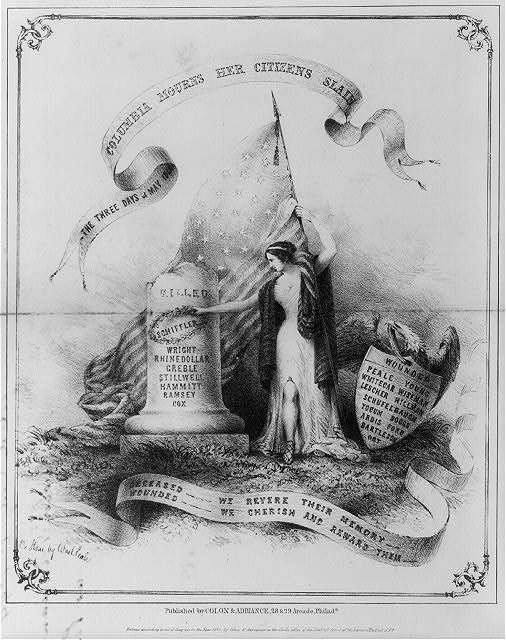
The three days of May 1844. Columbia mourns her citizens slain. Source: Library of Congress
Few would argue that a resurgence of nativism in the mid-19th century had a rational footing. It was, rather, “a nonrational response to contemporary problems” in “an age of social upheaval, an age of deprivation, stress, and imminent disaster.”
The nation was not facing civil war because of immigration from Ireland and Germany. The dislocations of urban-industrial growth were not produced by the newcomers, more victims than villains in this story. Attacking the Irish would not resolve the dilemma of sectional strife. Striking out at the aliens would not bring an end to socioeconomic changes or even the illusion of stability.
But embracing an antialien movement would allow frustrated nativists a sense of “escape from the central problems of their time. Unwilling to accept the dark side of their American experience—the wages of slavery, the stresses of a competitive culture, the crisis of community—they struck out at the most vulnerable group within their midst.” Thus Bennett posits, “the Know Nothing movement and the great appeal of nativism are found in concerns about immigration and historic fears of Catholicism.”
Many nativists thought the solution to the growing turmoil was to return to that which was familiar in the nation’s past, waging battle against an invading alien threat.
Americanists constructed a polarized world in which the enemy (now Catholic Irish and Germans) was an alien intruder and they were the “chosen people.”
In the end, Bennett asserts, the membership of the American Party would discover that “the issues over which they differed were as important as the religious, ethnic, and political bonds that united them.” Even though they achieved considerable early success as a party, they had not found a way to handle the great divisive issue of the day, slavery.
David H. Bennett, The Party Of Fear: The American Far Right from Nativism to the Militia Movement , (Chapel Hill, NC: University of North Carolina Press, 1988), 94, 103, 119.
About the image.
A memorial to nativist casualties of the violent clashes occurring between anti-foreigner “Native Americans” and Irish-American Catholics in Kensington, Philadelphia, May 6 through 8, 1844. The female figure of Columbia holds a large, billowing American flag near a broken column on which she places a wreath. On the column are the names of those Native Americans killed during the attacks on Catholic homes and institutions. At the top of the list, circled by Columbia’s wreath, is the name of George Schiffler, the first and most famous of the nativist martyrs. Other names inscribed on the column are: Wright, Rhinedollar, Greble, Stillwell, Hammitt, Ramsey, and Cox. To the right of Columbia is an American eagle supporting a shield with the names of the wounded, including: Peale (the artist?), Whitecar, Lescher, Young, Wiseman, Willman, Schufelbaugh, Yocum, Ardis, Boggs, Ford, Bartleson, and Ort. Above the figure floats a streamer with the print’s title. Below a similar banner reads “Deceased—-We Revere Their Memory—Wounded—We Cherish And Reward Them—.”
Medium: lithograph on wove paper
Published by Colon & Adriance, 28 & 29 Arcade, 1844.
Library of Congress Call Number: LOT 10615-34 [item] [P&P]
New! The Lincoln-Douglas Debates Audiobook
The good folks at BBC Audiobooks America have sent me a review copy of their new audiobook, The Lincoln-Douglas Debates. This production is particularly apropos because we have arrived at the 150th anniversary of these debates. The timing couldn’t be better for me because I am studying Antebellum America this term.
I put this 16 hour performance into the category of primary source in that it uses as script the same verbatim text captured by the scribes who got every word of the debates down uses shorthand so that they could be published in papers across the nation. Text for the production was provided by the Abraham Lincoln Association.
Dr. Allen C. Guelzo, Henry R. Luce Professor of the Civil War Era and Director of Civil War Era Studies at Gettysburg College, provides historical commentary.
Richard Dreyfuss plays Stephen Douglas and David Strathairn, Abraham Lincoln.
Having listened to first two CDs, I can highly recommend!
- ISBN: 978-1-60283-402-6
- Published on: 2009-01
- Format: Audiobook (Unabridged)
- Binding: Audio CD
On Know Nothings and Secret Societies – 7
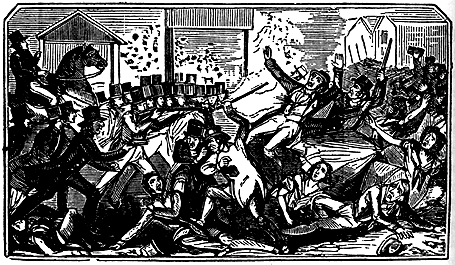
Fight between the Rioters in Kennsington. Source: The Historical Society of Pennsylvania. From: "A Full and Complete Account of the Late Awful Riots in Philadelphia." Philadelphia: John B. Perry, 1844.
Social historian David H. Bennett provides an in-depth view of the Know Nothing Party’s origins and attempts to get at the reasons for its emergence in his outstanding book, The Party Of Fear: The American Far Right from Nativism to the Militia Movement. He points to the incredible social upheaval occurring in America in the mid-19th century. Drawing from analysis of the way that people deal with change, Bennett points to the growing sense of a loss of control over personal destiny experienced by many native born American men, the complete antithesis of the self-deterministic opportunities upon which the nation was formed. The result was xenophobia, the target those who were not native born and the largest immigrant groups by the 1850’s were Irish and German.
Immigrants proved the perfect target for many Americans in these troubled times. They could associate their own loss of power or status with the emergence of a subversive group disrupting time-honored relationships. In a social order threatened by catastrophe, polarization between the forces of good and evil satisfied the desire for enemies on whom to pin the blame, whose defeat could restore the stability of the cherished past.
(1) David H. Bennett, The Party Of Fear: The American Far Right from Nativism to the Militia Movement , (Chapel Hill, NC: University of North Carolina Press, 1988), 107.
On Know Nothings and Secret Societies – 6
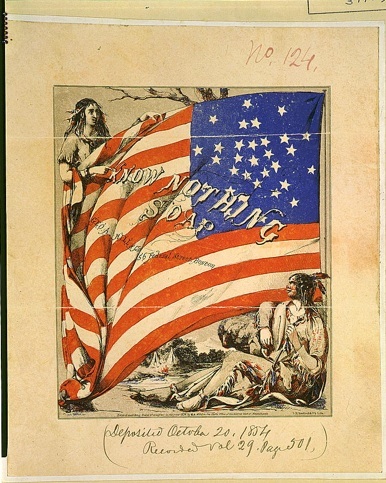
Know-Nothing Soap, Library of Congress, Repository: Library of Congress Prints and Photographs Division Washington, D.C. 20540 USA http://hdl.loc.gov/loc.pnp/pp.print
With the election of 1854, a stunning demonstration of the Know Nothings’ magnetic appeal, nativism became a new American rage.
Know Nothing candy, Know Nothing tea, and Know Nothing toothpicks were marketed, buses and stagecoaches received the charmed name, the clipper ship Know Nothing was launched in New York. Books appeared with “KN” on the cover, “Know Nothing” poems found easy publication, and the widely circulated Know Nothing Almanac or True American’s Manual was issued. The Almanac had schedules for sunset and moon phases mixed with a potpourri of nativist polemics, including stories of Catholic machinations in Ireland, statistics of foreigners in the almshouses and charity hospitals, as well as warnings of every kind of alien conspiracy. (1)
What had humble beginnings, as a fraternity, was now the American party. “Those in the movement remained proud of the secret order at the heart of the political organization.” (1)
——
(1) David H. Bennett, The Party of Fear: From Nativist Movements to the New Right in American History, 115.
About the image: An illustrated advertising label for soap manufactured in Boston, interesting for its imagery and allusion to the popular “Know Nothing” or nativist movement. In the foreground are two American Indians, emblematic of the movement’s prejudice against the foreign-born. In the lower right is a seated brave, leaning against a rock and holding a pipe. Above him a large American flag, with thirty-one stars, unfurls across the main picture area. The flag is supported in the upper left corner by an Indian woman, who points to the words “Know Nothing Soap” emblazoned on it. In the background is a landscape with tepees and a campfire on the bank of a stream.
Medium: 1 print : lithograph printed in red, grey, blue, and black on coated paper ; 15.2 x 12.6 cm. (image)
Created/Published:1854.
On Know Nothings and Secret Societies – 5
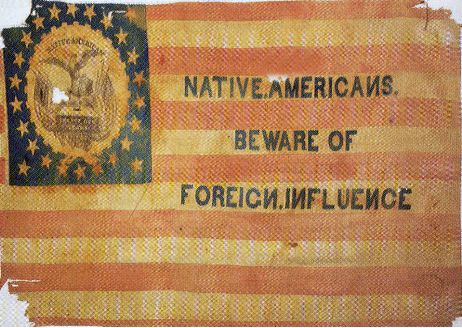
Flag of the Know Nothing Party
Historian James McPherson points out that the membership in the Know Nothings was “drawn primarily from young men in white-collar and skilled blue-collar occupations. A good many of them were new voters. One analysis showed that men in their twenties were twice as likely to vote Know Nothing as men over thirty.” (1)
Their leaders were also “new men” in politics who reflected the social backgrounds of their constituency. In Pittsburg, more than half of the Know-Nothing leaders were under thirty-five and nearly half were artisans and clerks. Know Nothings elected to the Massachusetts legislature in 1854 consisted mainly of skilled workers, rural clergymen, and clerks in various enterprises. Maryland’s leaders were younger and less affluent than their Democratic counterparts.” (1)
For more information on the Know Nothing Party in Massachusetts, see the Massachusetts Historical Society here.
(1) Battle Cry of Freedom: The Civil War Era (Oxford History of the United States), (New York: Oxford Press, 1988), 135-136.
Battle Cry of Freedom: The Civil War Era (Oxford History of the United States), (New York: Oxford Press, 1988), 135-136.
On Know Nothings and Secret Societies – 4
Historian David H. Bennett contends, “Only in extraordinary times could nativism shape the policies of and give its name to a major party. Such was the situation from I852 to 1854” as regards the Know Nothing Party.
Men of political prominence began to join. In several New England states, the Know Nothings became a formidable force by appealing to the
antislavery wing of the former Whig party. But throughout much of the South, displaced Whigs looked to nativism to protect their proslavery institutions. Passage of the Kansas-Nebraska Act accelerated the movement’s growth; with talk of “bleeding Kansas” on every lip, converts flocked in at the rate of five thousand per week in 1854. Men with promising futures began to seek entry. In the South there were John Bell (right), to be presidential candidate of the Constitutional Union party in 1860, and John J. Crittenden, senior senator from Kentucky, author of the compromise plan to solve the sectional struggle in the months before the outbreak of war. Henry Winter Davis, powerful Whig from Baltimore, and Andrew Jackson Donelson became Know Nothings. In the North, Nathaniel P. Banks and Jerome C. Smith, who would ride the antialien tide to prominence, one as Speaker of the House of Representatives and the other as mayor of Boston, were initiated. Henry Wilson, vice-president of the United States two decades later, Edward Everett, a future secretary of state, and Edward Bates, Lincoln’s attorney general, came to the new party. After considering the triumphant run of victories for the Know Nothings in the fall elections, even Millard Fillmore joined, taking the secret rites of the Star Spangled Banner in his own home in late winter.
David H. Bennett, The Party of Fear: From Nativist Movements to the New Right in American History, 114.
